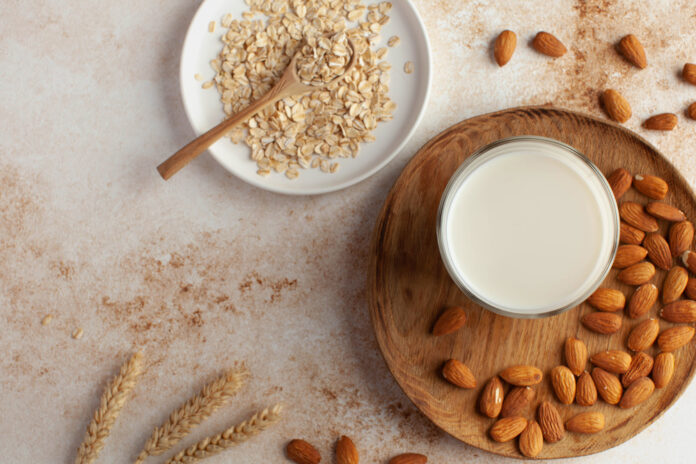
Plant-based dairy has received a large surge in popularity in the past few years. Traditional dairy presents issues, including being harmful to those with lactose intolerance, unsustainable farming practices, and more.
As such, lots of people have shifted their gaze toward milk alternatives. Milk alternatives are attractive –they have a longer shelf life than dairy milk, are safe for those with dairy allergies, and forgo the harmful components sometimes found in cow milk, such as growth hormones or pus.
Now, several milk alternatives are available at every grocery store! Without a doubt, two of the most popular milk alternatives right now are oat milk and almond milk. Below, we’ll dive into what differences the two have so you can choose the right milk for you.
Oat Milk
The average glass of oat milk provides about 3 grams of protein, 2 grams of fiber, and 16 grams of carbohydrates. Due to its higher protein and carbohydrate count, oat milk will keep hunger satisfied longer as compared to almond milk.
Oat milk has a thick, creamy consistency making it great for lattes or soups. Oat milk is higher in key vitamins and minerals as compared to almond milk. Oat milk features 50% of the daily recommended serving of Vitamin b12 and Riboflavin. It has 20% of the daily recommended amount for Phosphorus, Vitamin D, Calcium, and Vitamin A.
Oat milk comes in around 120 calories a cup, making it a little less friendly for those closely watching their calorie intake. For reference, whole dairy milk is about 150 calories per cup.
Almond Milk
As compared to oat milk, almond milk has a much lower calorie count. Almond milk is only 39 calories per cup! This makes almond milk much more diet-friendly than oat milk or dairy milk.
The lower calorie count is accompanied by a lesser nutritional value. Almond milk has 1 gram of fiber and protein per serving and 4 grams of carbohydrates per serving. This means almond milk is less likely to satisfy hunger than oat milk.
However, this makes almond milk a great light option that can be added liberally to coffee, smoothies, and even in items like mac and cheese to lower the overall calorie count of the dish. Almond milk has a thin, yet creamy consistency that matches the consistency of cow’s milk more closely than oat milk does.
Almond milk is a little lower than oat milk when it comes to vitamins and minerals. Namely, almond milk features no Vitamin b12, and only small amounts of Riboflavin and Phosphorus. However, in terms of amounts of calcium and Vitamin D, oat and almond milk are very similar.
Almond milk has 3 grams of fat per serving, which compared to oat milk’s 5 grams of fat per cup, makes it a lighter and more diet-conscious choice.
Conclusion
Both oat and almond milk are great alternatives for those looking to move away from traditional milk. Each has different nutritional values to consider, but both are great alternatives to dairy!
Sources:
Almond Milk vs. Oat Milk | Which is Better? | Milk Pick



















